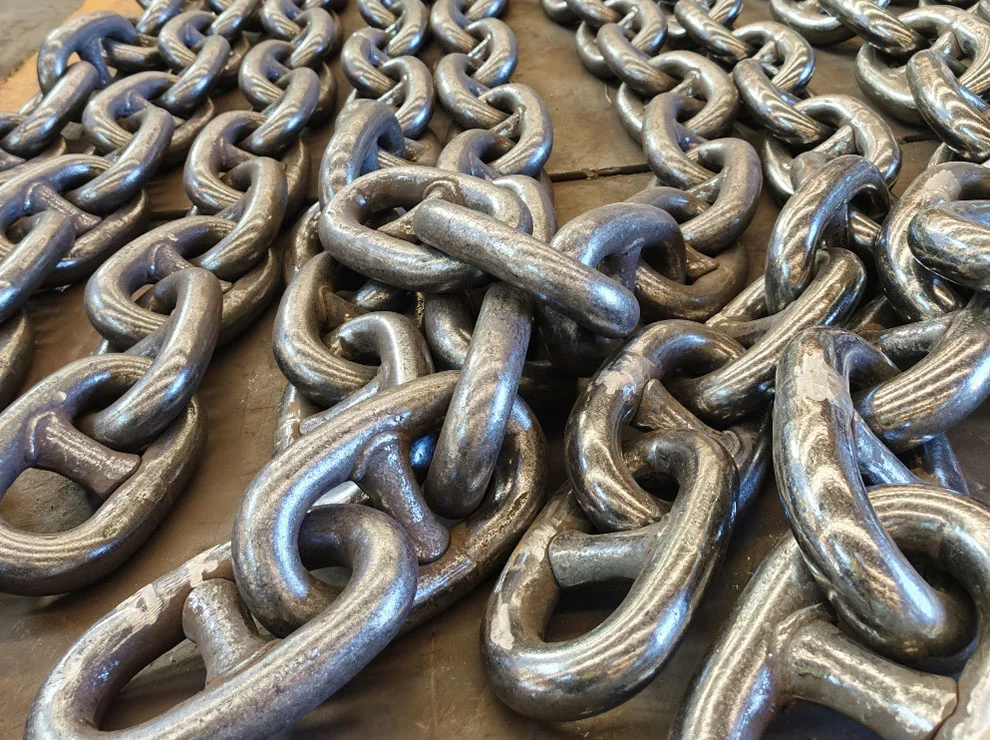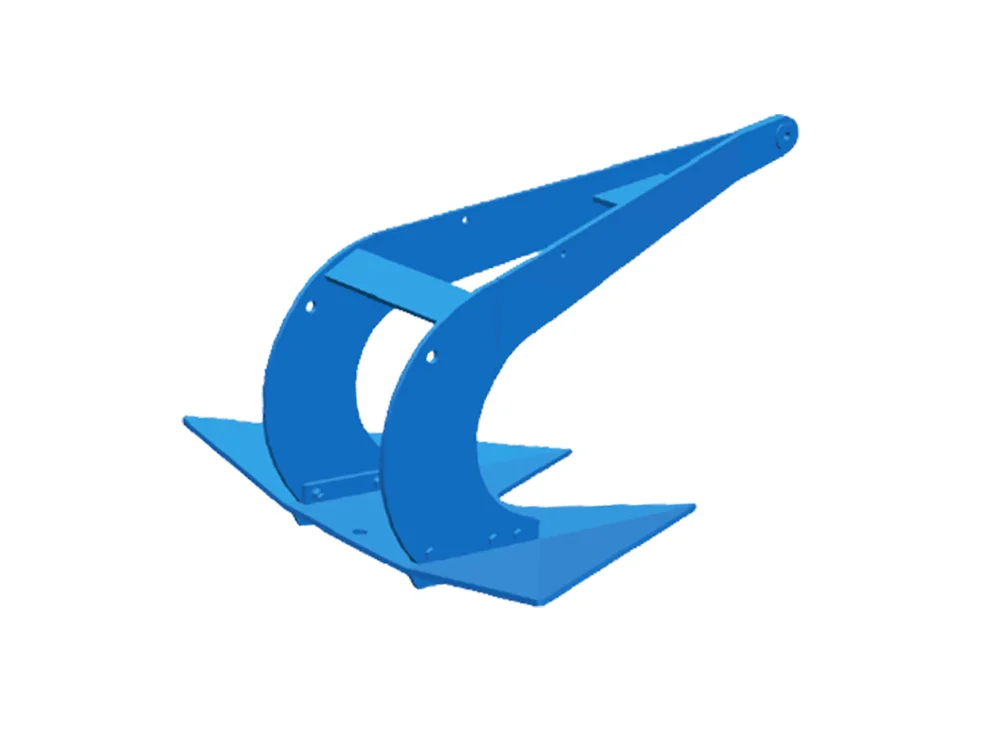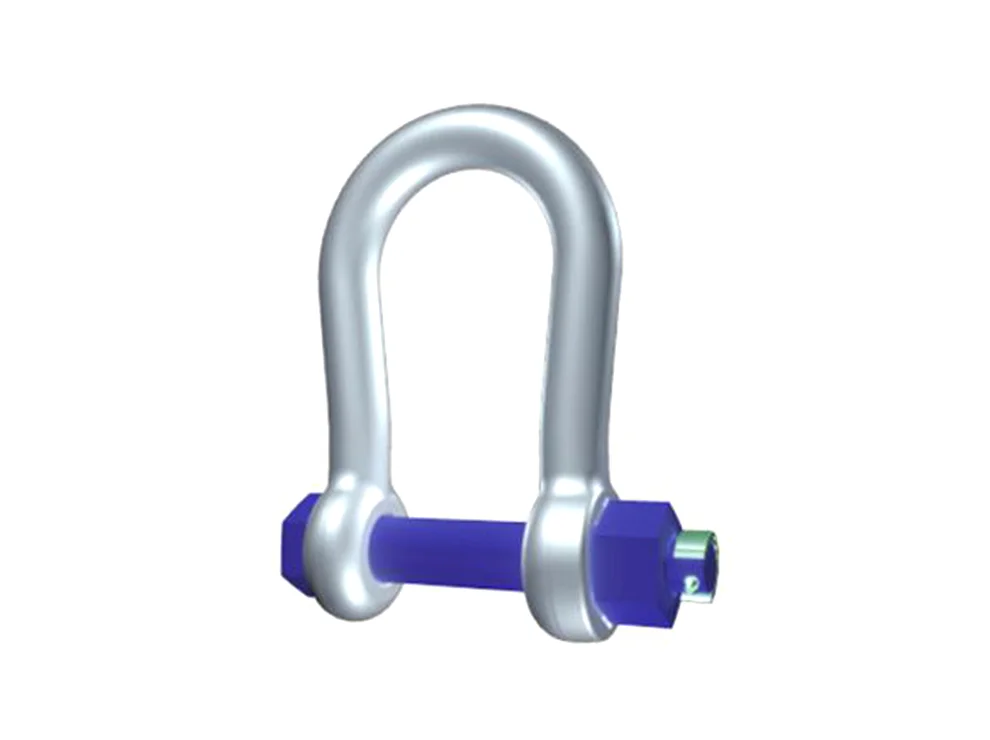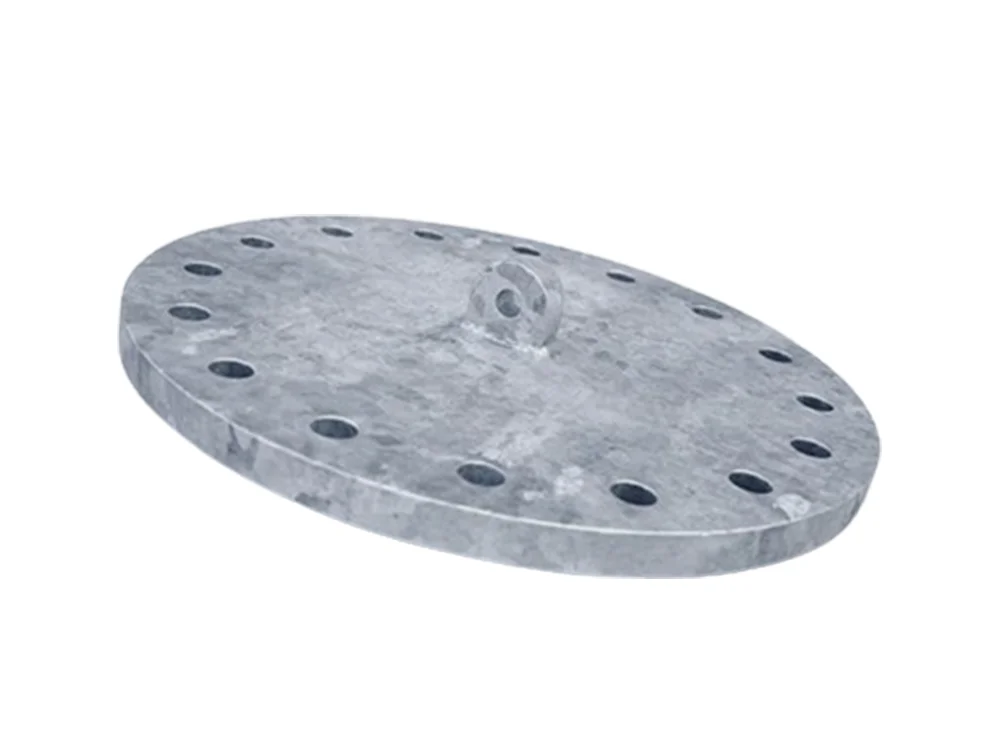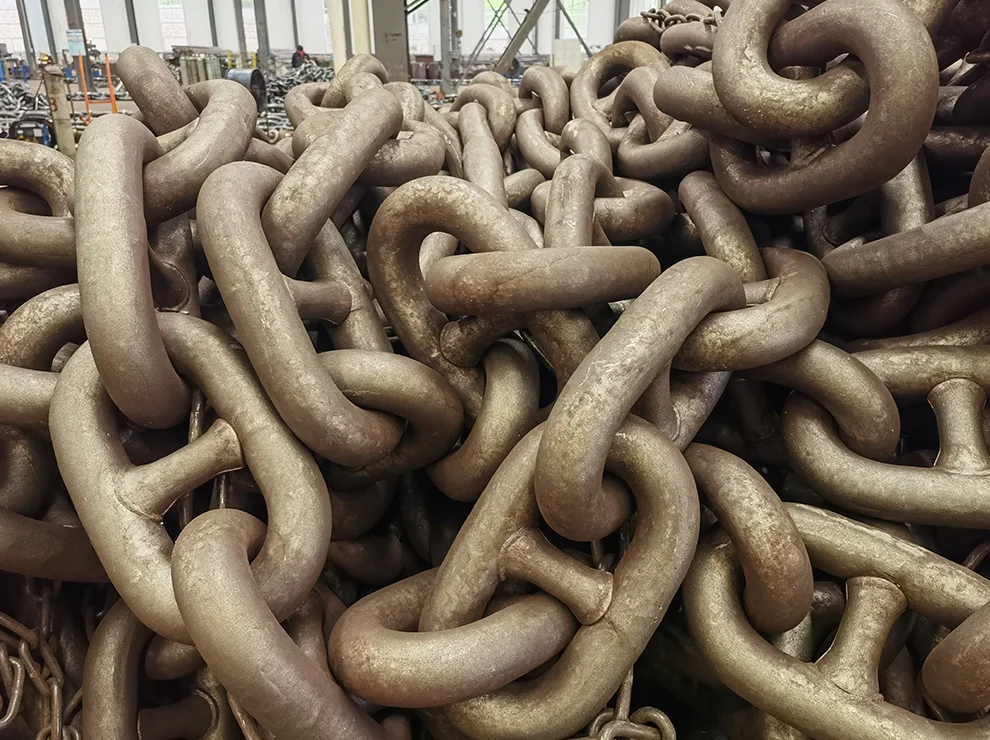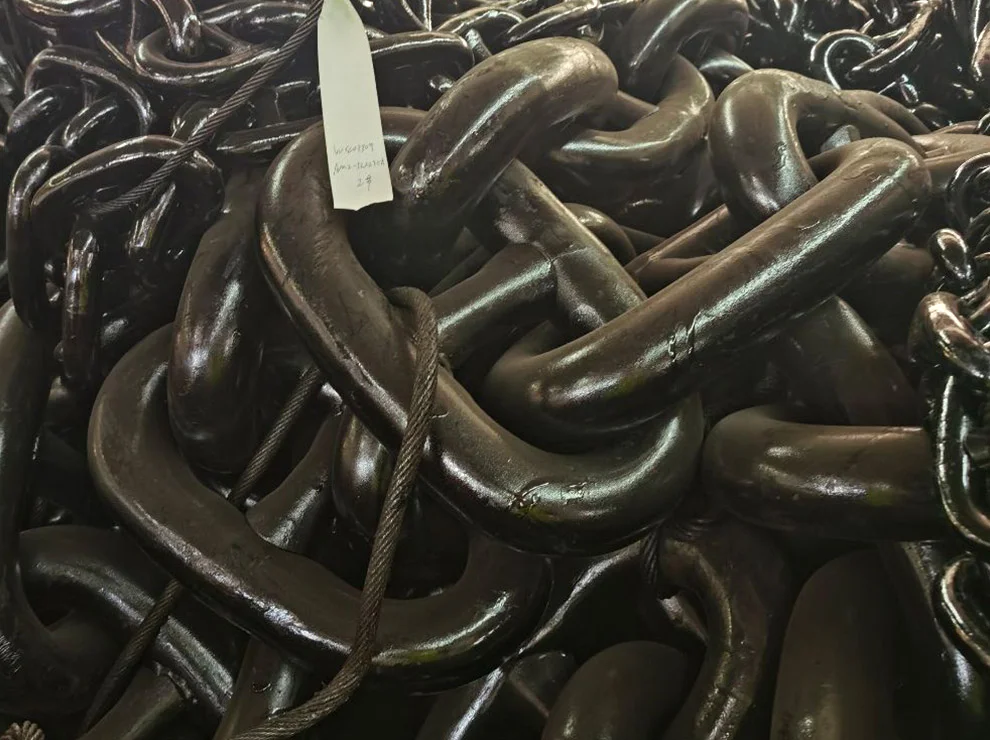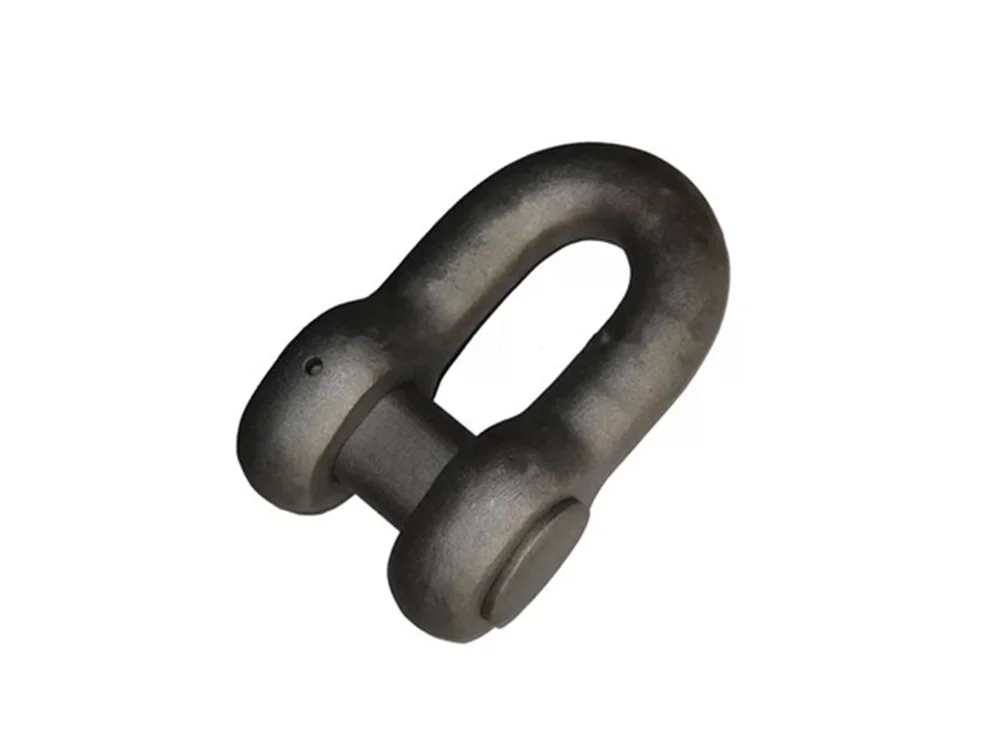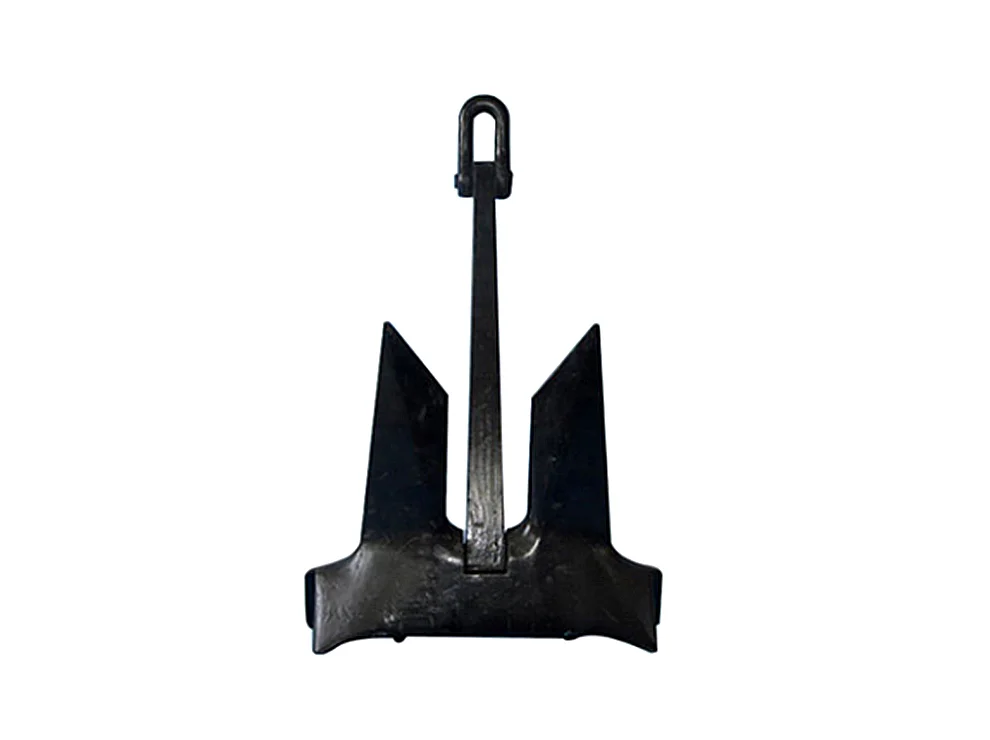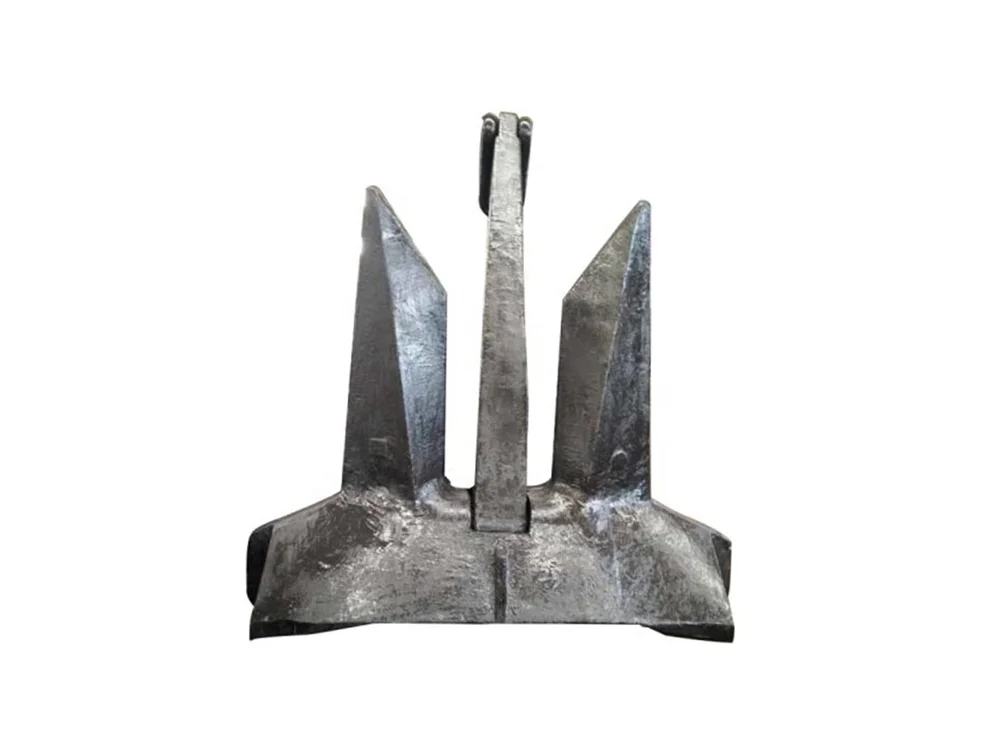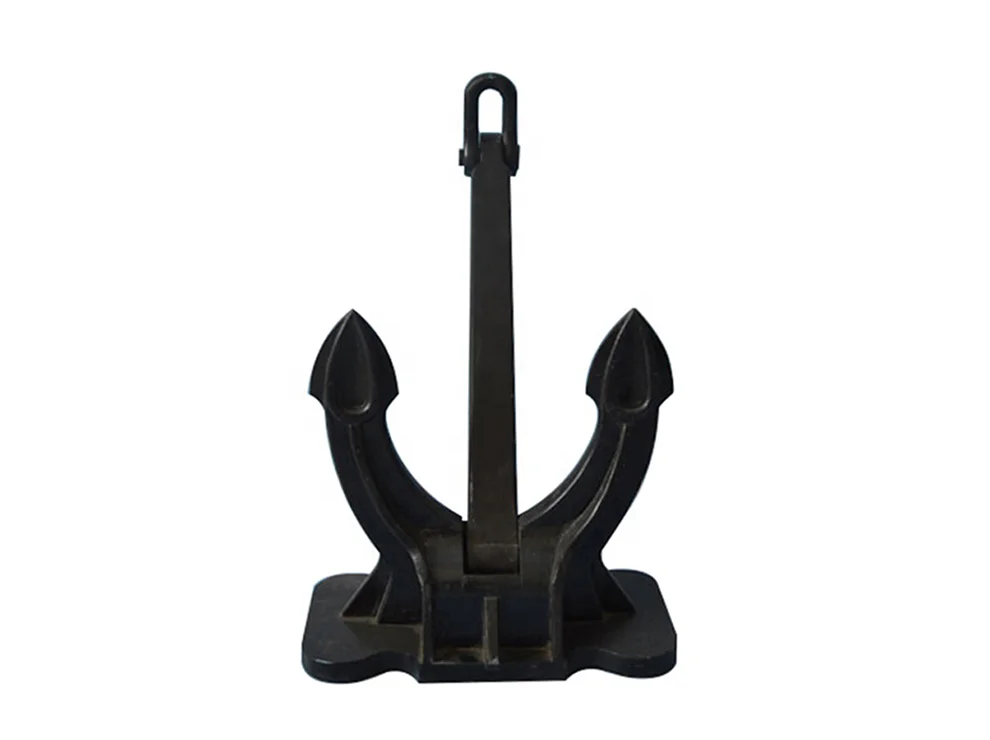Fishing chains have three specifications: short link chian, middle link chain and long link chain. Different types of fishing chains have different features.
Products
hot-sale products
-
 Fishing Chains
Fishing Chains -
 Stud Link Anchor Chain Fish Chain
Stud Link Anchor Chain Fish ChainStud link anchor chains are a type of heavy-duty chain commonly used for anchoring and mooring vessels. They have a central stud in each link that helps to prevent kinking, deformation, and fouling. These chains are known for their strength and are often preferred for large vessels and applications where significant loads are involved.
-
 Dual Shank Anchor
Dual Shank AnchorThe dual shank anchor features two parallel shanks that work together to embed and hold in various seabed conditions. This design provides higher holding power than traditional anchors, especially in soft ground and mud, and is commonly used in aquaculture and swing moorings.
-
 High Strength aquaculture Mooring Shackle
High Strength aquaculture Mooring ShackleMooring shackles are manufactured with alloy steel by following ISO9001 Quality Control System. With our years know-how on forging, heat treatment and hot dip galvanized, it is ensured the mooring shackle avoid any Hydrogen Embrittle-ment and offer a longer fatigue life of safe performance compared to EN13889 requirement and safety.
-
 Mooring Plate for Aquaculture
Mooring Plate for AquacultureMooring connection plates are manufactured using alloy grade material and followed by full heat treatment process.The durability ensures that the plates can withstand exposure to saltwater, reducing maintenance needs and extending the lifespan of the aquaculture setup.
-
 AM3 Stud Link Anchor Chain
AM3 Stud Link Anchor ChainSinostar Marine is a manufacturer of AM2/AM3 stud link anchor chains.Can provide LR, DNV, CCS, ABS, BV and other classification society certification.
-
 AM2 Stud Link Anchor Chain
AM2 Stud Link Anchor ChainStud link anchor chain AM2 is a specific type of anchor chain widely used in marine applications. It's characterized by having a stud (a crossbar or bar) within each link, adding strength and preventing kinking or twisting. AM2 is a designation within the marine industry for a specific grade of this chain, indicating its strength and material properties.
-
 HDG Studless Anchor Chian
HDG Studless Anchor ChianAnchor Chain for marine farm mooring system, with diameter 16mm to 50mm, most used in European fish farming industry.
-
 Anchor Shackle Type D End Shackle
Anchor Shackle Type D End ShackleAn Anchor Shackle Type D End Shackle is a specific type of shackle used in marine applications, particularly for connecting anchor chains. It's a D-shaped fitting with a removable pin, designed to safely connect the anchor's standard shackle to the chain or to a rope with a thimble.
-
 AC-14 HHP Casting Steel Stockless Anchor
AC-14 HHP Casting Steel Stockless AnchorAC-14 anchor is a stockless HHP anchor with a wide anchor crown, thick and long flukes, and longitudinal ribs.
-
 AC-14 SB HHP Casting Anchor
AC-14 SB HHP Casting AnchorThe AC-14 SB HHP Casting Anchor is a high-holding-power anchor, specifically designed for marine applications. It's a stockless anchor with a design that provides excellent weight-to-performance ratios and can be used in various seabed conditions.
-
 Spek Anchor Stockless Anchor
Spek Anchor Stockless AnchorA ship Spek anchor, also known as a stockless anchor, is a common type of anchor used in commercial shipping and cruise vessels. It is designed with a compact, stockless design for easy handling and deployment, especially in shallow waters, and is known for its good holding power.
T Head Type Dock Bollard
| Attributes: | |
| Material: | Cast Iron or Cast Steel |
| Surface: | Sandblasting then Painted Epoxy |
| Capacity: | 10Ton to 200Ton |
| Color: | Colorful Paint |
| Customize: | Acceptable |
| Certification: | LR, ABS, DNV, BV, CCS, KR, RMRS, NK etc. |
T Head Type Dock Bollard
A T Head Dock Bollard is a type of mooring bollard that is commonly used in marine and waterfront applications. It typically consists of a vertical post that is anchored to a pier or dock, with a horizontal T-shaped head on top.
Here are some of the features and characteristics of a T Head Dock Bollard:
1. Material: T Head Dock Bollards are usually made of high-strength materials such as steel or ductile iron to provide the necessary strength and durability to withstand the harsh marine environment.
2. Size and shape: The size and shape of T Head Dock Bollards can vary depending on the specific application, but they typically have a large, flat top that provides a wide surface area for securing mooring lines.
3. Capacity: The capacity of a T Head Dock Bollard refers to the maximum load it can safely handle. This capacity will vary depending on the specific bollard and its design, but it is typically measured in tons or pounds.
4. Installation: T Head Dock Bollards are typically installed on concrete or steel foundations using bolts or other anchoring hardware. The installation process can vary depending on the specific site conditions and requirements.
5. Usage: T Head Dock Bollards are commonly used for mooring large vessels such as cargo ships, tankers, and cruise ships. They provide a secure point for tying off mooring lines, allowing the vessel to remain safely and securely at the dock.
6. Maintenance: To ensure the continued safe and reliable operation of a T Head Dock Bollard, regular maintenance and inspection is required. This may include cleaning, lubrication, and periodic inspections for signs of wear or damage.
Drawings of T Head Type Dock Bollard:
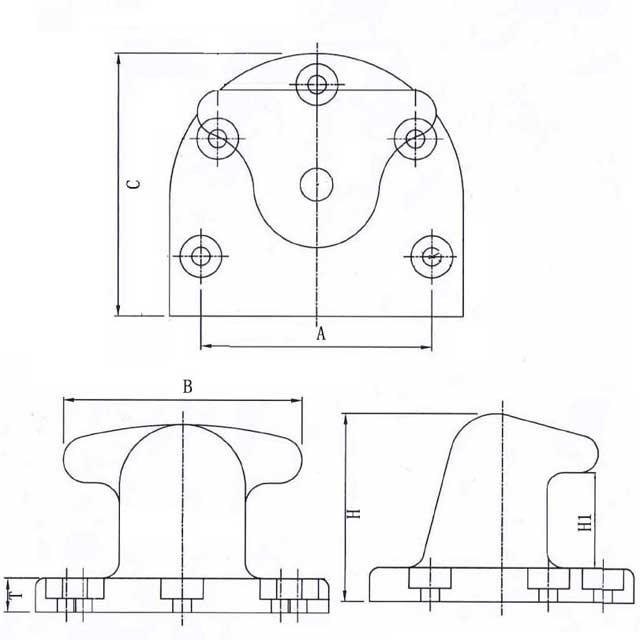
Specification of T Head Type Dock Bollard:
| Dimensions (mm) | Bolts | Capacity(T) | |||||
| A | B | C | T | H | H1 | ||
| 292 | 305 | 330 | 47 | 246 | 120 | M24*4 | 10 |
| 321 | 335 | 363 | 52 | 271 | 127 | M24*4 | 15 |
| 336 | 351 | 380 | 54 | 294 | 150 | M24*5 | 20 |
| 351 | 366 | 396 | 57 | 307 | 200 | M30*5 | 30 |
| 432 | 451 | 489 | 70 | 378 | 235 | M36*5 | 50 |
| 497 | 518 | 561 | 80 | 434 | 245 | M42*6 | 75 |
| 584 | 610 | 660 | 80 | 498 | 290 | M42*7 | 100 |
| 643 | 671 | 726 | 87 | 545 | 306 | M48*7 | 125 |
| 689 | 719 | 779 | 87 | 579 | 386 | M48*7 | 150 |
| 730 | 762 | 826 | 97 | 618 | 349 | M56*8 | 200 |




